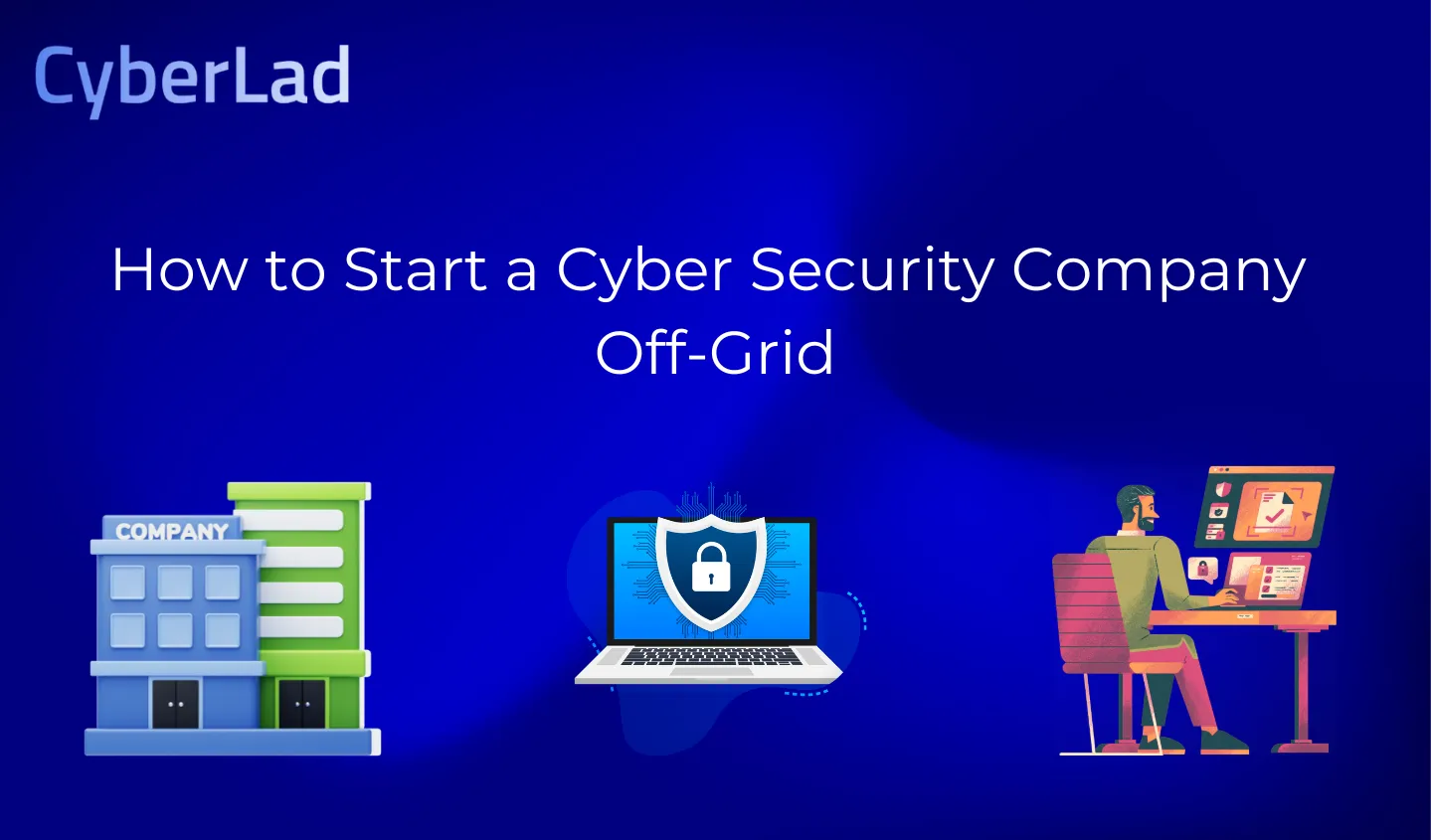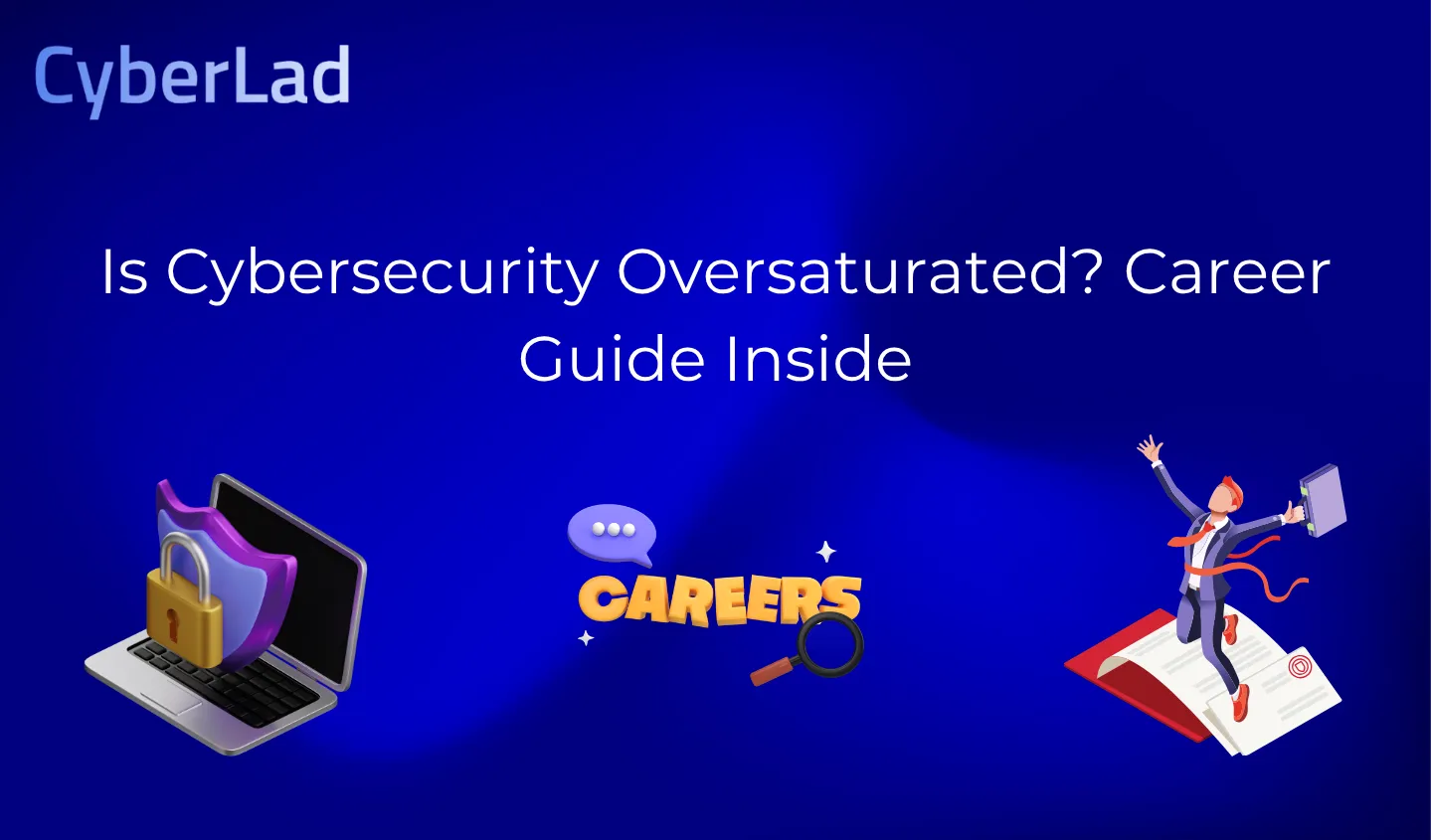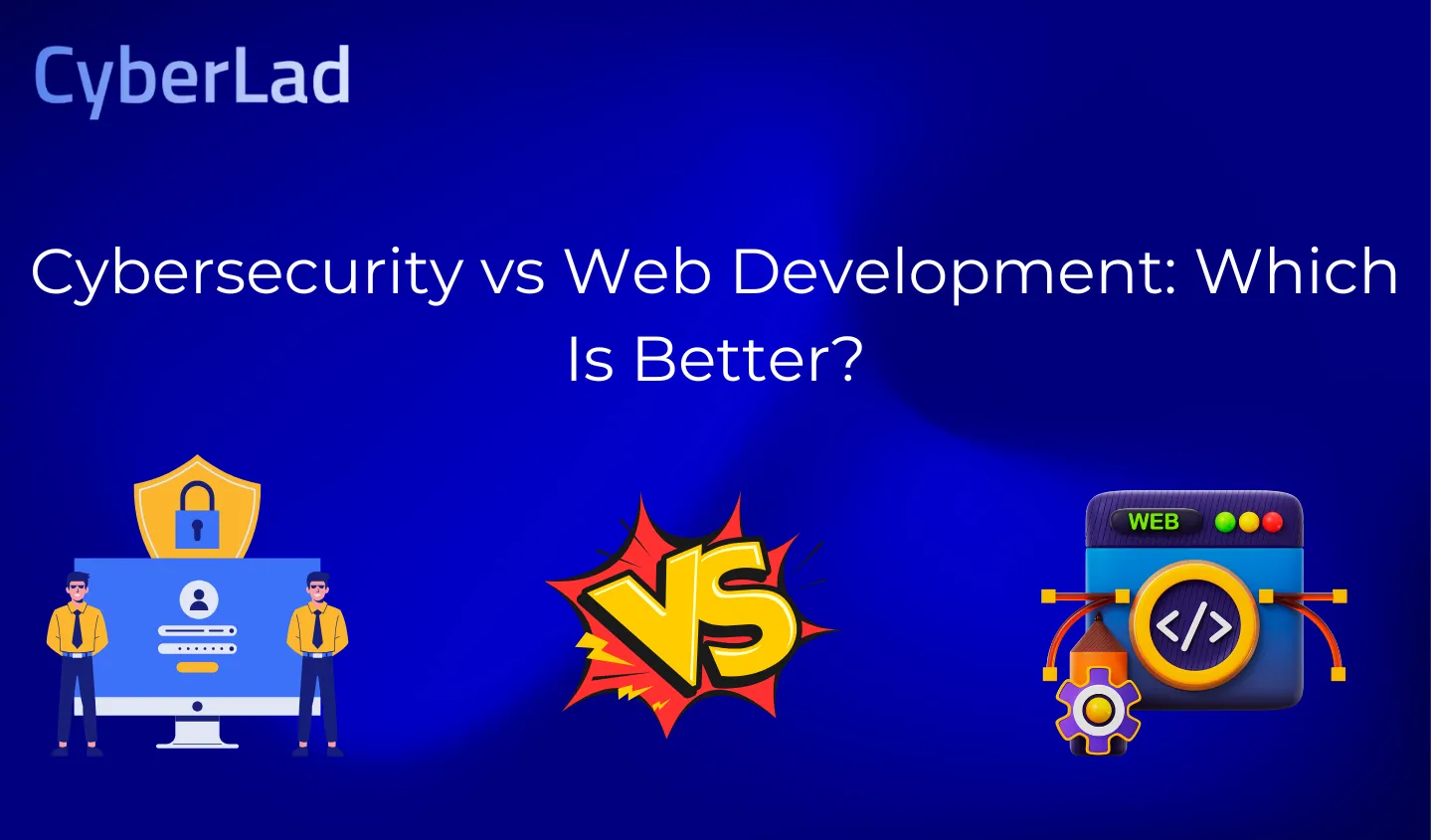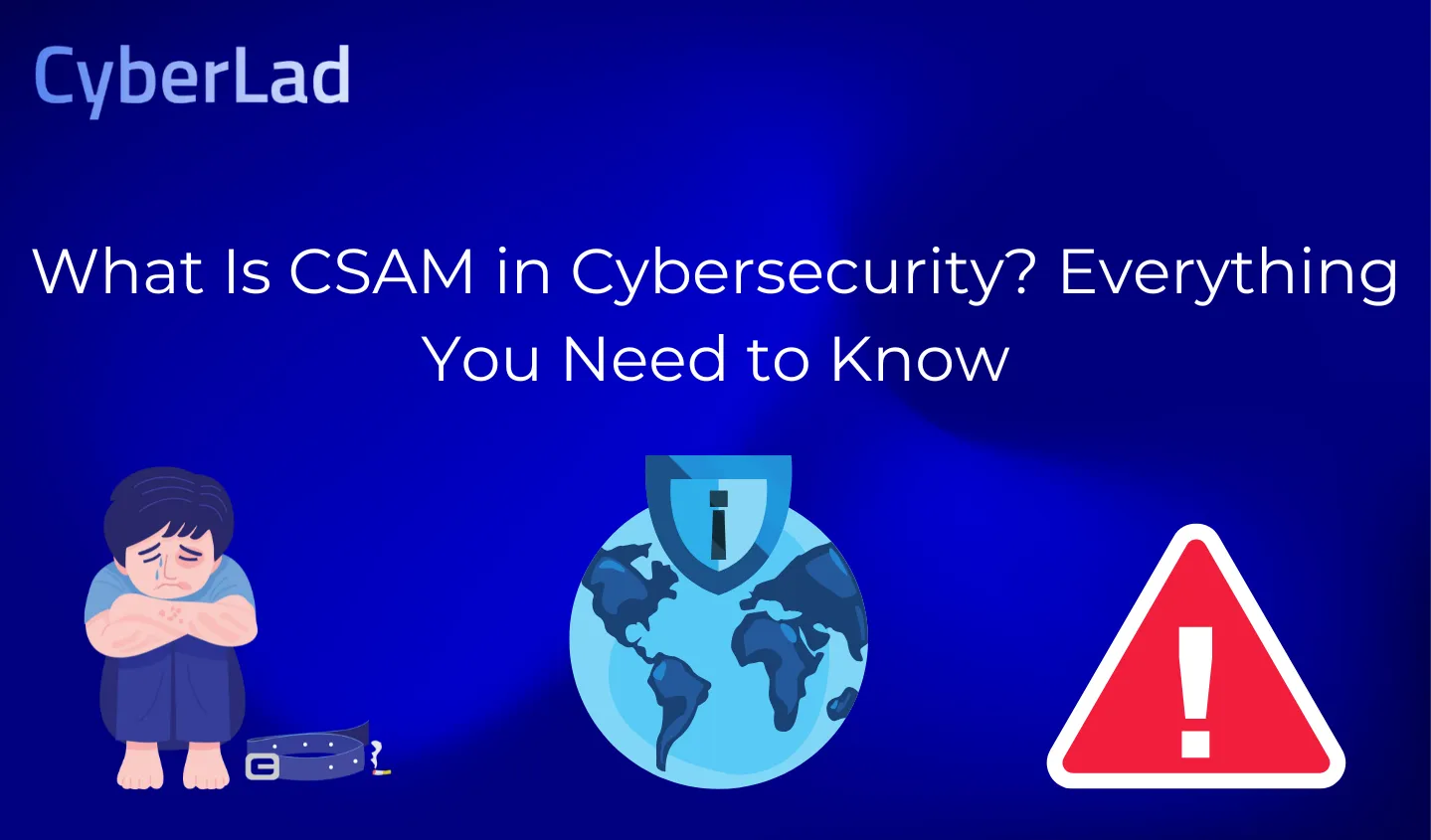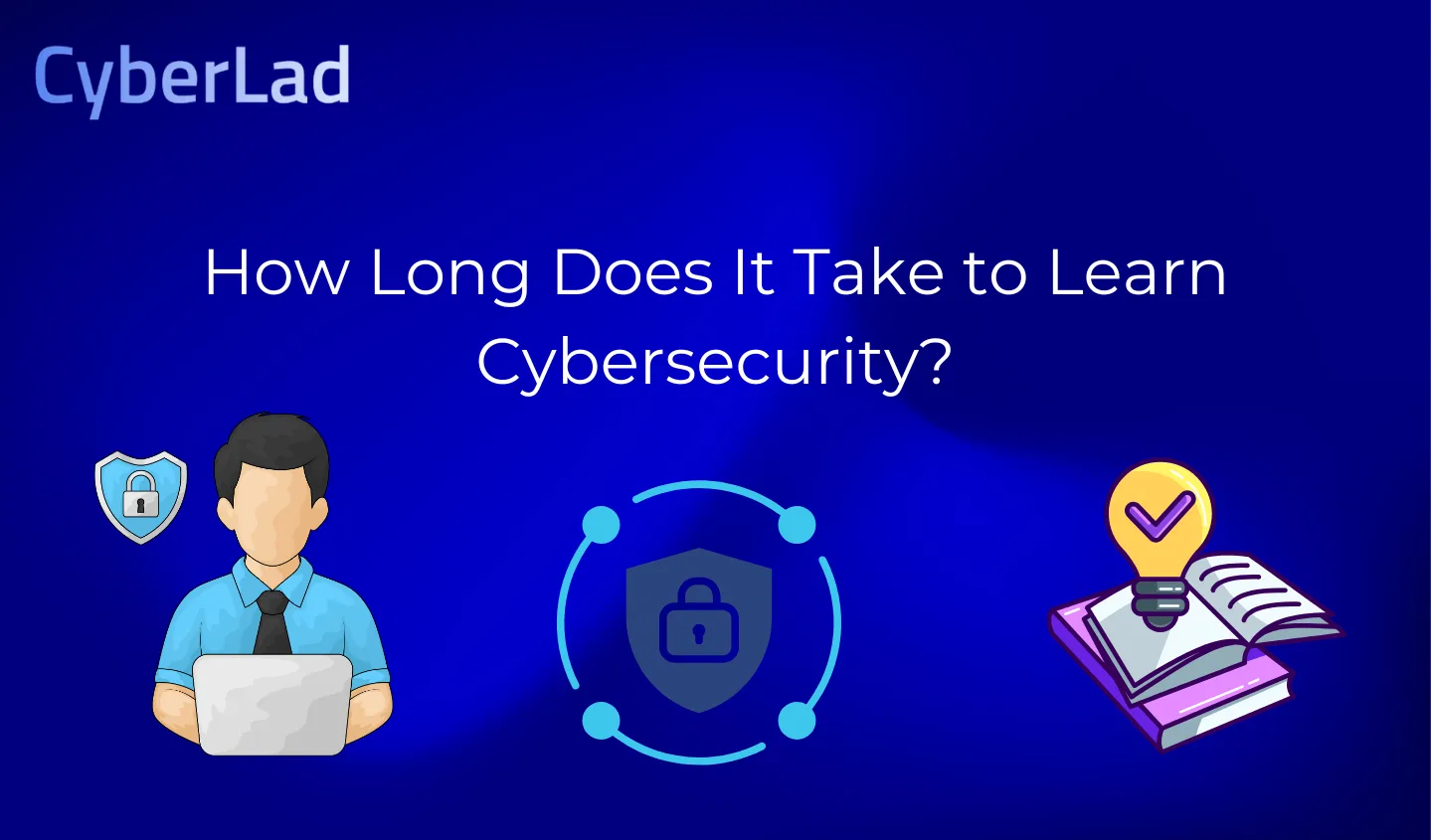So you want to start a cyber security company, but not the kind that chases VC crumbs or resells bloated vendor packages.
You’re thinking off-grid. Independent. Maybe even a little subversive. This isn’t about pivoting to compliance-as-a-service or hawking threat dashboards. It’s about building a security outfit that respects privacy, operates lean, and answers to no one but your code and your conscience.
Break free from Big Tech. Learn how to start a cyber security company built for privacy, resilience, and true independence, no investor leash, no surveillance strings.
In this guide, we’ll break down how to launch a cyber security company from zero without selling out to investors, platforms, or bureaucrats.
Whether you’re bootstrapping a consultancy, crafting niche tools, or building an underground red team, this is your blueprint for staying sharp, sovereign, and off-grid.
Understanding the Cybersecurity Landscape
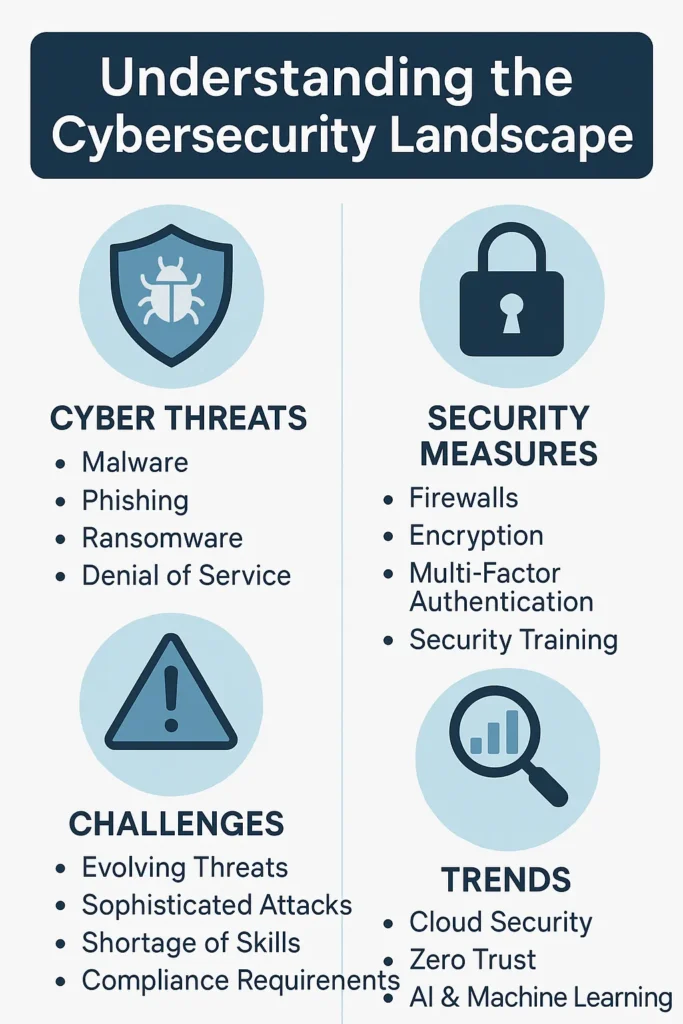
If you’re serious about learning how to start a cyber security company, you need more than a few certs and a slick domain name.
Read More On: Is Cybersecurity Oversaturated? Career Guide Inside
You need to understand the digital warzone you’re stepping into, where the threats are coming from, what clients need, and where the big players are fumbling. This isn’t just a booming market. It’s a battleground.
1. The Cybersecurity Industry is on Fire (in Every Way)
The numbers don’t lie. Cybercrime is projected to cost the world over $10 trillion annually by 2025. Every breach, every ransomware attack, every leaked database creates another opening for real security providers to step up.
But that opportunity is wrapped in noise: VC-backed tools that don’t work, government contracts with weak accountability, and a workforce burned out by endless alerts.
Your edge? Understanding what works and being willing to build it from scratch if you have to.
2. Threats are Getting Smarter, Faster, and Less Human
Forget script kiddies. The new breed of attackers are backed by nation-states, automated by AI, and invisible until it’s too late.
Tools like WormGPT are making phishing smarter. LLMs are generating polymorphic malware. Even deepfake voice cloning is now being used for real-world social engineering.
This is the level your company needs to operate at: anticipating attacks that haven’t hit the mainstream yet. You’re not just selling protection, you’re selling foresight.
Read More On: What Is Baiting in Cyber Security? Don’t Fall For It
3. Compliance is a Joke Unless You Go Beyond It
Let’s be honest: a lot of cybersecurity companies exist to tick boxes. SOC 2. ISO 27001. PCI-DSS. It’s a paper shield, and clients know it. Companies aren’t just hiring you to pass audits anymore.
They want active threat detection, real-world testing, and advisors who can speak clearly about risk, not just regulations.
If you’re just another checkbox vendor, you’ll drown in competition. If you’re a strategist with teeth, you’ll stand out.
Read More On: Cybersecurity vs Web Development: Which Is Better?
4. Clients are Craving Independence and Digital Sovereignty
Here’s a trend the big firms won’t talk about: people are fed up with centralized tech. Cloud dependency is a risk. Google, AWS, and Microsoft Azure all have backdoors, surveillance vectors, and single points of failure.
Privacy-conscious companies from crypto startups to privacy-first SaaS builders want cybersecurity partners who don’t rely on compromised infrastructure.
This is a growing niche. If you can deliver secure, decentralized solutions that respect autonomy and privacy, you’re not just a provider, you’re a partner in digital liberation.
Read More On: How Long Does It Take to Learn Cybersecurity with No Experience?
5. Regulation is Booming, But It’s Not a Roadblock
New laws like the NIS2 Directive, GDPR, CCPA, and incoming AI safety regulations are making cybersecurity non-negotiable.
For many businesses, it’s a case of “secure or get fined.” That means more potential clients but also more complexity.
This is your opportunity to simplify the chaos. Build a business that guides clients through compliance without selling your soul to bureaucracy.
Read More On: Cyber Security vs Software Engineering: Code or Defend?
Defining Your Niche and Services
One of the biggest mistakes people make when learning how to start a cyber security company is trying to offer everything to everyone.
That’s a fast track to becoming forgettable. The most successful cybersecurity businesses dominate a niche. They solve a specific set of problems for a specific type of client, and do it better than anyone else.
This section will help you identify your niche, choose the right cybersecurity services to offer, and position your startup for maximum impact in a crowded industry.
Read More On: What Is CSAM in Cybersecurity? Everything You Need to Know
1. Why Choosing a Cybersecurity Niche Matters
The cybersecurity market is massive, but fragmented. From penetration testing to compliance audits to incident response, each niche has its tools, client expectations, and growth curve.
Here’s why niching down is critical:
- Build authority faster: Specialists become trusted experts. Generalists fade into the noise.
- Streamline operations: Focusing on fewer services allows for deeper automation and tighter execution.
- Boost profitability: High-value clients are willing to pay more for tailored, expert solutions.
If you’re starting a cybersecurity business in 2025, this isn’t optional, it’s your competitive advantage.
2. The Most Profitable Cybersecurity Niches in 2025
Here are the hottest niches for launching a cybersecurity company today:
Offensive Security Services
- Services: Penetration testing, red teaming, social engineering simulations.
- Tools: Kali Linux, Cobalt Strike, Metasploit, custom scripts.
- Ideal clients: Fintech, healthcare, high-stakes startups.
Defensive Security and Managed Services
- Services: SIEM management, threat detection, firewall configuration, SOC-as-a-Service.
- Tools: Splunk, Wazuh, Suricata, AlienVault.
- Ideal clients: SMEs without in-house security teams.
Application and Cloud Security
- Services: Secure code audits, DevSecOps integration, cloud configuration assessments.
- Tools: Terraform, Trivy, Checkov, OWASP ZAP.
- Ideal clients: SaaS startups, e-commerce platforms, Web3 projects.
Cybersecurity Compliance and Risk Management
- Services: GDPR, HIPAA, CCPA compliance audits, security policies, risk assessments.
- Tools: Drata, Vanta, spreadsheets (yes, really).
- Ideal clients: Regulated industries, finance, healthcare, and legal.
Privacy and Data Protection Services
- Services: Encryption implementation, secure communications, privacy policy consulting.
- Tools: PGP, Signal, self-hosted alternatives.
- Ideal clients: Journalists, activists, privacy-first companies.
Threat Intelligence and OSINT
- Services: Dark web monitoring, threat actor profiling, breach notification.
- Tools: Maltego, Shodan, SpiderFoot, custom scraping.
- Ideal clients: Enterprises, high-profile individuals, law firms.
3. Choosing the Right Cybersecurity Services to Offer
Don’t pick services based only on what you know. Pick based on what the market wants, and what you can become the best at delivering.
Popular cybersecurity services in demand:
- Web and network penetration testing
- Vulnerability scanning and remediation
- Cyber risk assessments
- Security training and phishing simulations
- Cloud security audits
- Virtual CISO (vCISO) services
- Secure software development consulting
- Incident response and digital forensics
SEO Tip: These are high-intent keywords. Use them in your website service pages and blog posts to drive targeted organic traffic.
Read More On: What Is GRC in Cybersecurity? Everything You Should Know
4. Position Your Cybersecurity Business for Maximum Impact
Your positioning is your brand’s battle cry. It tells clients what you do, why it matters, and why they should trust you.
Ask:
- Are you the stealthy red teamers who simulate real-world adversaries?
- The zero-trust architects for startups scaling fast?
- The privacy-first security firm that doesn’t touch Big Tech cloud?
Pro tip: Build a one-sentence positioning statement, like:
“We help privacy-first SaaS companies harden their infrastructure and stay compliant without relying on corporate surveillance clouds.”
Read More On: Do You Need a Degree for Cybersecurity in 2025?
5. Speak the Language of Value, Not Tech
Your clients don’t care about your certifications or your toolset. They care about risk, money, and reputation. Frame your services in outcomes:
- “Reduce breach risk by 70% within 90 days.”
- “Achieve SOC 2 compliance in under 6 weeks.”
- “Monitor the dark web for exposed employee credentials.”
This not only closes deals, it also makes your SEO and content more accessible to non-technical decision-makers.
Read More On: Top 10 Cybersecurity Forensic Tools For Ethical Hackers In 2025
Legal and Business Foundations
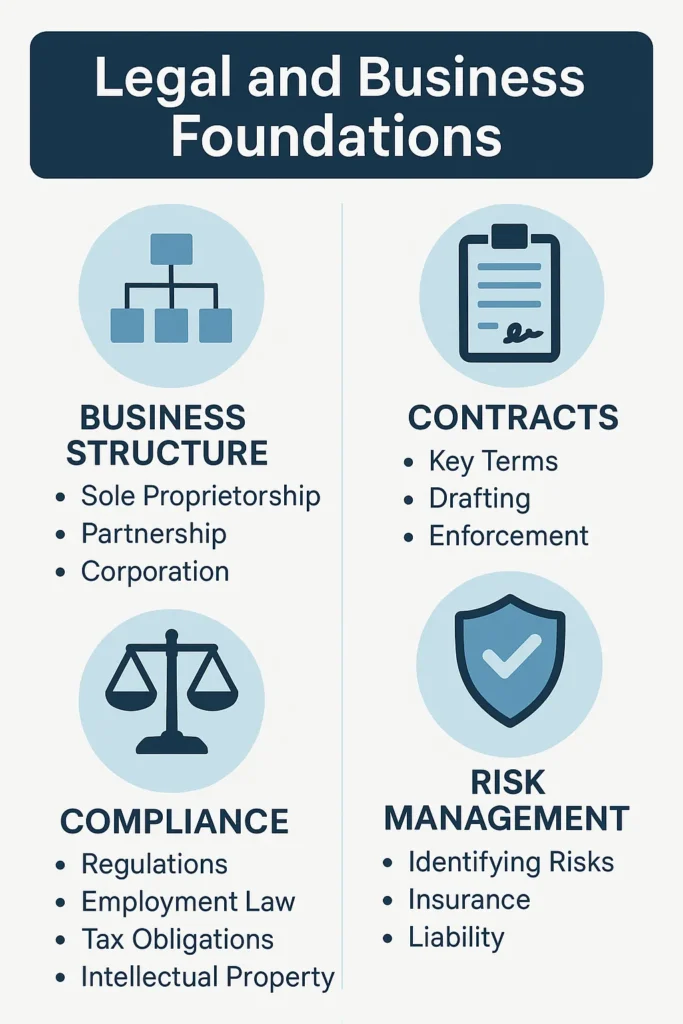
You can’t fight cybercrime while skirting the law or worse, getting tangled in it. Building a cybersecurity company that lasts means laying a rock-solid legal and business foundation. It’s not glamorous, but it’s the difference between a real company and a liability waiting to happen.
Here’s what you need to do to start your cybersecurity business legally and strategically.
1. Choose the Right Business Structure
The entity you choose defines how you pay taxes, handle liability, and structure your operations.
Top choices for cybersecurity companies:
- LLC (Limited Liability Company): Popular for small firms and startups. Offers personal liability protection and tax flexibility.
- C Corporation: Ideal if you’re planning to raise venture capital or build a large team. Double taxation applies, but it scales.
- Sole Proprietorship: Quick and easy, but risky. You’re personally liable for everything, a bad idea in a litigious industry like this.
SEO Tip: Use variations like “best legal structure for a cybersecurity business” and “LLC for cybersecurity company” in your subheaders and metadata.
Read More On: Which Of The Following Activities Poses The Greatest Personal Cybersecurity Risk?
2. Register Your Business and Get a Tax ID
Once you’ve chosen your structure:
- Register your company name with your state (or country).
- Get an EIN (Employer Identification Number) from the IRS (or local tax authority). You’ll need this to open business bank accounts and pay employees.
- Consider trademarking your brand name if you want to operate globally or protect your IP.
3. Understand Licensing and Regulatory Requirements
In most countries, you don’t need a special license to start a cybersecurity company. But that doesn’t mean you’re off the hook.
You may need to comply with:
- Data protection laws (GDPR, CCPA, HIPAA, depending on your clients).
- Export regulations if you deal with encryption tools (U.S. EAR, ITAR).
- Professional certifications (while not required, things like CISSP or CEH can help with trust and marketing).
Pro tip: Keep an attorney who understands infosec on retainer. The legal gray zones in cyber can bite hard later.
4. Get Business Insurance (Yes, Really)
Cybersecurity firms are high-risk by nature. You’re handling sensitive data and offering advice that, if wrong, could cost a client millions.
Must-have policies:
- Professional liability (errors and omissions) – covers legal fees if your advice causes damage.
- Cyber liability insurance protects your own business from breaches and lawsuits.
- General business insurance – for office damage, employee issues, etc.
Even if you’re operating remotely or solo, don’t skip this. A single angry client can take you down.
5. Draft Bulletproof Contracts and Service Agreements
If you’re providing penetration testing, security audits, or incident response, you’re walking a legal tightrope. One missed vulnerability or poorly worded report can trigger lawsuits.
Make sure your contracts cover:
- Scope of work and limitations of liability
- Confidentiality and data handling clauses
- Client responsibilities during engagements
- Legal jurisdiction and dispute resolution
SEO Tip: Include subheadings like “sample contracts for cybersecurity services” or “cybersecurity service agreement essentials” to rank for long-tail keywords.
6. Build a Privacy-Respecting, Regulation-Ready Business
Privacy isn’t just a selling point, it’s a legal necessity. Your cybersecurity firm should operate with the same level of security and data ethics you preach.
- Encrypt all client data at rest and in transit.
- Keep logs only as long as necessary and explain your policy.
- Use secure billing and communications (Signal, ProtonMail, etc.)
Operate like you’re always under audit, because eventually, you might be.
Building Your Team
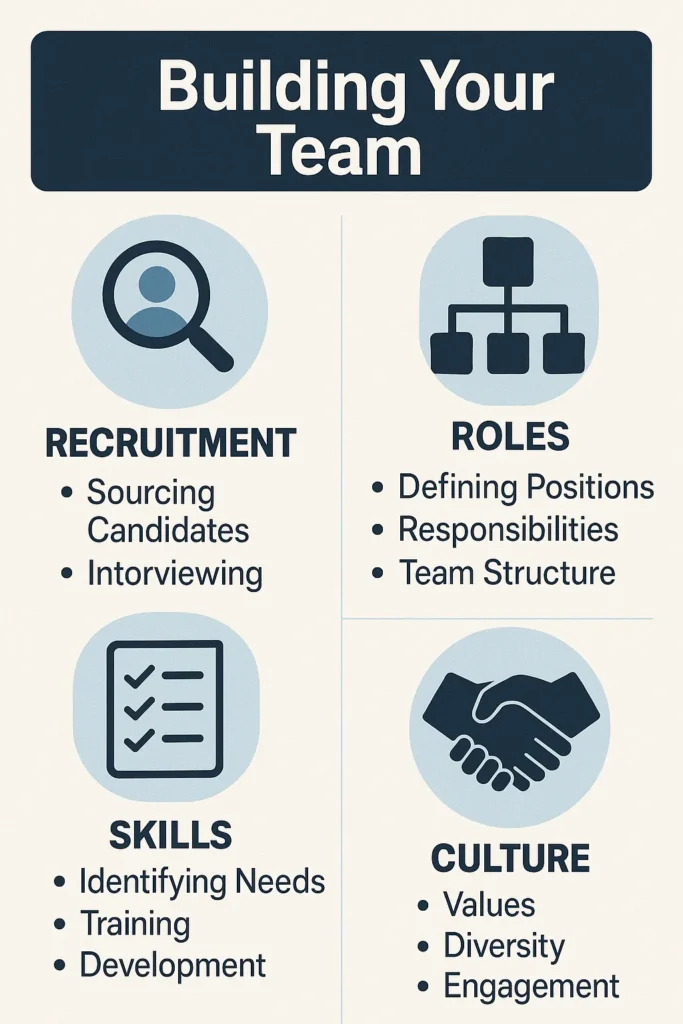
Your cybersecurity company isn’t a brand. It’s a capability. And that capability lives and dies by the quality of your team. In this field, the team is the product.
Whether you’re executing high-stakes red team engagements or building secure-by-design infrastructure, you need experts who live and breathe infosec.
Here’s how to build a technically elite team that can deliver.
1. Initial Team Composition: Build for Execution, Not Appearances
When you’re just starting your cybersecurity business, every hire needs to move the needle. Focus on roles that enable immediate technical execution and customer delivery.
Core Roles to Launch With:
- Technical Founder / Lead Consultant
Should be capable of performing hands-on penetration testing, code reviews, or security architecture design.
Skills: Linux internals, exploit development, scripting (Python/Bash), threat modeling, MITRE ATT&CK framework. - Security Engineer / Full-Stack SecOps
Helps automate scanning pipelines, secure CI/CD, build hardened server images, and manage detection tooling.
Skills: Infrastructure as Code (Terraform, Ansible), EDR configuration, cloud IAM policies, container security. - Advisory Legal/Compliance Analyst (Contract)
Not full-time at first, but someone who understands GDPR, CCPA, HIPAA, PCI-DSS, and export control laws.
Critical when delivering to regulated industries.
Pro tip: If the budget’s tight, consider hiring contractors or freelancers for initial projects, then convert standout talent into full-time staff.
Read More On: Will Cybersecurity Be Replaced By AI?
2. Scaling With Precision: Key Technical Roles to Add Next
As client load increases and services diversify, you’ll need specialists. Not generalists with padded resumes operators with domain-specific mastery.
Penetration Tester / Red Teamer
- Focus: Simulating real-world attackers to test client defenses.
- Tools: Burp Suite Pro, Cobalt Strike, BloodHound, Responder, custom C2 frameworks.
- Certs (optional): OSCP, CRTP, PNPT.
Reverse Engineer / Malware Analyst
- Focus: Static and dynamic analysis of binaries, malware triage, and exploit development.
- Tools: Ghidra, IDA Pro, x64dbg, Radare2, Frida.
- Languages: C, C++, ASM, Python.
DevSecOps Engineer
- Focus: Embedding security in the development pipeline and cloud architecture.
- Stack: Jenkins, GitLab CI, Docker, Kubernetes, AWS/GCP/Azure security.
- Skills: Secrets management (Vault, SOPS), scanning tools (Trivy, Snyk), shift-left security practices.
Threat Intelligence Analyst
- Focus: Tracking threat actors, mapping TTPs, analyzing IOCs, and reporting risks to clients.
- Tools: MISP, TheHive, OpenCTI, YARA, Sigma, Zeek.
- Sources: Twitter, Telegram, pastebins, dark web forums, and leaked databases.
Security Architect
- Focus: Designing end-to-end secure systems for clients, from policy to implementation.
- Responsibilities: Identity federation, zero trust architecture, segmentation strategy, SIEM/SOAR implementation.
3. Where to Find Elite Cybersecurity Talent
Forget job boards full of keyword-stuffing resume bots. Your real team is hanging out in:
- Hacker forums (Reddit’s /r/netsec, DEF CON Discords)
- Bug bounty platforms (HackerOne, Synack, Bugcrowd)
- CTF communities (CTFtime.org, Hack The Box, TryHackMe)
- Open-source contributor lists (GitHub security projects, tool authors)
- Private invite-only Slack/Matrix groups
What to look for:
- Repos with working PoCs and tools
- Strong write-ups or research blogs
- Contributions to CVEs or threat feeds
- Experience in active incident response, not just labs
4. Security-First Team Ops: Infrastructure and Access Control
Running a cybersecurity team means walking your talk. Every internal operation needs to be locked down from day one.
Team security practices to enforce:
- Zero trust network access (ZTNA): No VPNs use authenticated, segmented access per role.
- Passwordless login: Yubikeys, SSH certs, hardware tokens only.
- Secure communication: Tox, Matrix, Element, Session, or self-hosted Signal bridges.
- Internal services: GitLab, Gitea, Mattermost, or Forgejo self-hosted and audited.
- Incident playbooks: Red team simulations should include internal compromise drills.
5. Culture of Security Excellence: No Tourists Allowed
You’re not building a “startup culture.” You’re building a digital black-ops team for hire. Prioritize curiosity, paranoia, and principled action over status, titles, or corporate experience.
Signs of a good hire:
- Maintains a personal threat lab
- Submits bugs to open-source tools
- Participates in CTFs or security cons
- Has strong OpSec and minimal social footprints
Red flags:
- Flashy resume with no GitHub activity
- Relies solely on commercial tools
- Ignores or dismisses privacy concerns
Build a team that takes digital sovereignty seriously internally and for your clients.
Read More On: How Do Macros Pose A Cybersecurity Risk?
Developing Your Technology Stack
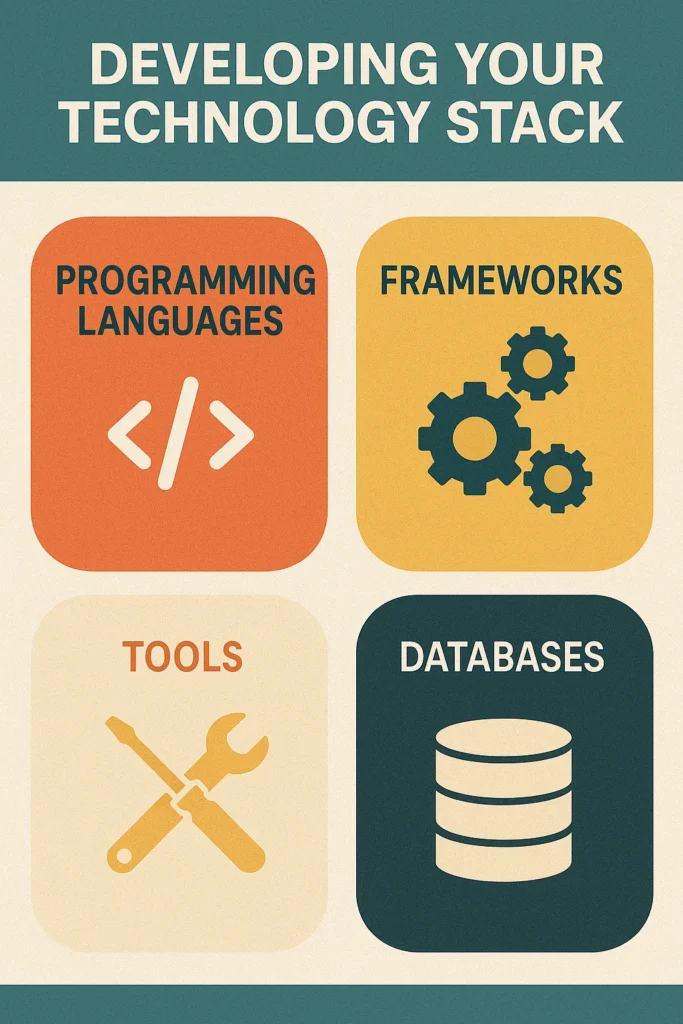
Your cybersecurity company’s technology stack isn’t just your backend, it’s your armor, your arsenal, and your control panel. The wrong stack can leave you exposed, dependent on Big Tech, or simply too slow to respond. The right stack gives you sovereignty, speed, and tactical superiority.
Here’s how to build a cybersecurity tech stack that’s lean, secure, and future-proof.
1. Infrastructure: Host Like You Mean It
Where you host your operations determines your exposure. Privacy and control are key.
Avoid:
- AWS, Azure, and GCP are centralized, surveilled, and expensive.
Prefer:
- Self-hosted on dedicated servers (Hetzner, OVH, or bare metal colos)
- Privacy-first VPS providers (1984 Hosting, OrangeWebsite, Njalla VPS)
Core Hosting Needs:
- Hardened Linux VMs (Alpine, Debian, Arch with custom hardening)
- Reverse proxies (NGINX, Traefik) with automatic TLS via Let’s Encrypt or self-signed certs
- DNS over HTTPS (DoH) and DNSSEC support for the resolver infrastructure
2. Endpoint Security and Internal Systems
Even if your whole team is remote, your endpoints are attack surfaces. You need hardened systems by default.
Workstation OS choices:
- Qubes OS (for air-gapped, compartmentalized workflows)
- Kali Linux / Parrot OS (for offensive tooling)
- Arch or Hardened Gentoo (for custom setups)
Must-have endpoint tools:
- Yubikeys or Nitrokeys for PGP and hardware MFA
- VeraCrypt for disk encryption
- Firejail or Bubblewrap for sandboxing applications
3. Offensive Security Tooling
If your business includes pentesting, red teaming, or adversary simulations, you need a custom toolchain.
Core Tools:
- Recon: Amass, Subfinder, DNSX, HTTPX, Shodan CLI
- Scanning: Nmap, Masscan, RustScan
- Exploitation: Metasploit, Cobalt Strike (or open alternatives like Sliver, Havoc)
- Payloads: Empire, Covenant, Obfuscation frameworks (Invoke-Obfuscation, Veil)
- Post-exploitation: BloodHound, Mimikatz, Rubeus
Bonus: Maintain a private collection of zero-day PoCs or use exploit frameworks like Fuzzdb + custom fuzzer engines.
4. Defensive Security and Monitoring
For companies offering blue team services, SIEM configuration, and monitoring, a strong defensive stack is non-negotiable.
Logging and SIEM:
- Wazuh – Open-source SIEM + XDR
- Elastic Stack (ELK) – Log aggregation, parsing, dashboards
- Graylog – Lightweight alternative for log management
Network monitoring:
- Zeek – Deep network visibility
- Suricata – IDS/IPS with custom rule sets
- Arkime – Packet capture and session data visualization
EDR/AV: If you must run one, go for CrowdStrike, SentinelOne, or open-source Falco (for containers).
Read More On: Which Of The Following Is Not A Function Of A Cybersecurity Framework?
5. DevSecOps and Automation
If you’re offering secure software consulting or deploying services, automate everything.
Toolchain:
- IaC: Terraform, Ansible, Packer
- CI/CD: GitLab CI, Drone, Jenkins (air-gapped)
- Container security: Docker Bench, Trivy, Clair
- Secrets management: HashiCorp Vault, Doppler, SOPS
Threat feeds & enrichment:
- AbuseIPDB, AlienVault OTX, MalwareBazaar APIs
- Integrate into pipelines for threat scoring and alerts
6. Communication and Collaboration
Forget Slack and Gmail. They’re built for convenience, not security.
Preferred tools:
- Email: ProtonMail, Tutanota, or your own Mail-in-a-Box setup
- Messaging: Signal (self-hosted bridge), Matrix (via Synapse), Tox
- Collab tools: CryptPad, HedgeDoc, Nextcloud (self-hosted)
7. Client-Facing Stack
How you deliver results matters. Build a secure, professional experience for clients.
Deliverables:
- Markdown-based PDF reports with embedded hashes for tamper-proofing
- Secure file delivery (OnionShare, Wormhole, or encrypted GDrive alternatives)
- Encrypted client portals (Nextcloud, Keybase, or custom SFTP setup)
Marketing and Client Acquisition

Most cybersecurity companies suck at marketing. They spam LinkedIn, run stale Google Ads, or attend the same trade shows talking about “digital transformation” with no clear value. That’s not you.
You’re building a cybersecurity business based on skill, precision, and trust. Your marketing should reflect that stealthy, strategic, and targeted like a well-crafted exploit. Here’s how to acquire clients the smart way.
1. Define Your Ideal Client Profile (ICP)
Before you write a tweet or launch a site, you need to know who you’re targeting.
Key segmentation questions:
- Are you serving startups, enterprises, or high-risk individuals?
- What industries are bleeding from cyberattacks? (Hint: fintech, SaaS, legal, healthcare, crypto)
- Who’s the buyer? CTO, CISO, founder, compliance officer?
Examples:
- “Series A SaaS companies needing SOC 2 compliance and app security hardening.”
- “Crypto exchanges looking for red team simulations and 24/7 threat intel.”
SEO tip: Use these ICPs to optimize for long-tail keywords like “cybersecurity services for SaaS companies” or “penetration testing for fintech startups.”
Read More On: How Can Generative AI Be Used In Cybersecurity
2. Build a Presence That Signals Authority (Not Just Existence)
No, you don’t need a massive social media following, but you do need credibility.
Essentials for your digital footprint:
- A clean, fast, and minimalist website (self-hosted if possible).
- Pages for each service (SEO-optimized with client pain points).
- A blog or knowledge base that shares real insights, not fluff.
- PGP key and Signal number for secure communications build trust instantly.
Optional but powerful:
- Drop your tools on GitHub with well-documented usage.
- Publish pentest reports (anonymized) or zero-day writeups.
- Submit to HackerOne, Bugcrowd, or CVE databases and link back to your firm.
3. Tactical SEO and Content Strategy
Don’t chase high-volume keywords. Dominate your niche with tactical content.
Content that converts:
- “How [industry] companies can prepare for [compliance framework]”
- “Top 10 overlooked vulnerabilities in [specific tech stack]”
- “How our red team compromised a production system in 3 hours”
Technical content ideas:
- Open-source intelligence (OSINT) case studies
- “Tool of the month” reviews with usage examples
- Zero-day breakdowns and analysis
Technical SEO best practices:
- Use schema markup for articles and FAQs
- Include code snippets in <pre> tags for dev tools
- Internal link between service pages, blog, and contact forms
4. Guerrilla Outreach: Hacking Your Way In
Skip the LinkedIn DMs. Reach clients with precision, not spam.
Methods:
- Monitor breach data or Shodan for companies with exposed assets, then offer a fix.
- Offer free security assessments for high-risk targets (with their consent).
- Find buggy apps on Product Hunt and reach out to the founder with a PoC.
- Track funding rounds (Crunchbase, TechCrunch) and reach out to newly funded startups.
What to send:
- A brief note describing the risk
- A real-world example of how you’d help
- A clear CTA (free consult, risk assessment, report preview)
Use secure email and PGP when possible; it shows professionalism and earns trust in privacy-first circles.
Read More On: Does Cybersecurity Require Coding?
5. Use Strategic Channels, Not Just “Platforms”
Your clients aren’t hanging out on Instagram. You need to be where serious tech and security folks live.
Targeted platforms:
- HackerNews, Reddit (/r/netsec, /r/sysadmin)
- Mastodon (infosec instances), XMPP groups
- CTF communities, Discords, and private Slack groups
Pro tip: Sponsor or run challenges in online CTFs or writeups with your branding attached.
Read More On: NotEvil Search Engine: How It Works and What You Can Find
6. Turn Clients Into Your Salesforce
Once you deliver results, your best marketing is word-of-mouth, especially in niche industries.
Post-project best practices:
- Ask for testimonials (pseudonymized if needed).
- Offer referral bonuses or free assessments for referrals.
- Publish anonymized case studies (with client permission).
- Keep them updated with periodic threat reports or alerts.
This builds long-term relationships and keeps your name top-of-mind when their network asks, “Who do you use for security?”
Try Our Cybersecurity Risk Calculator
Scaling Your Business
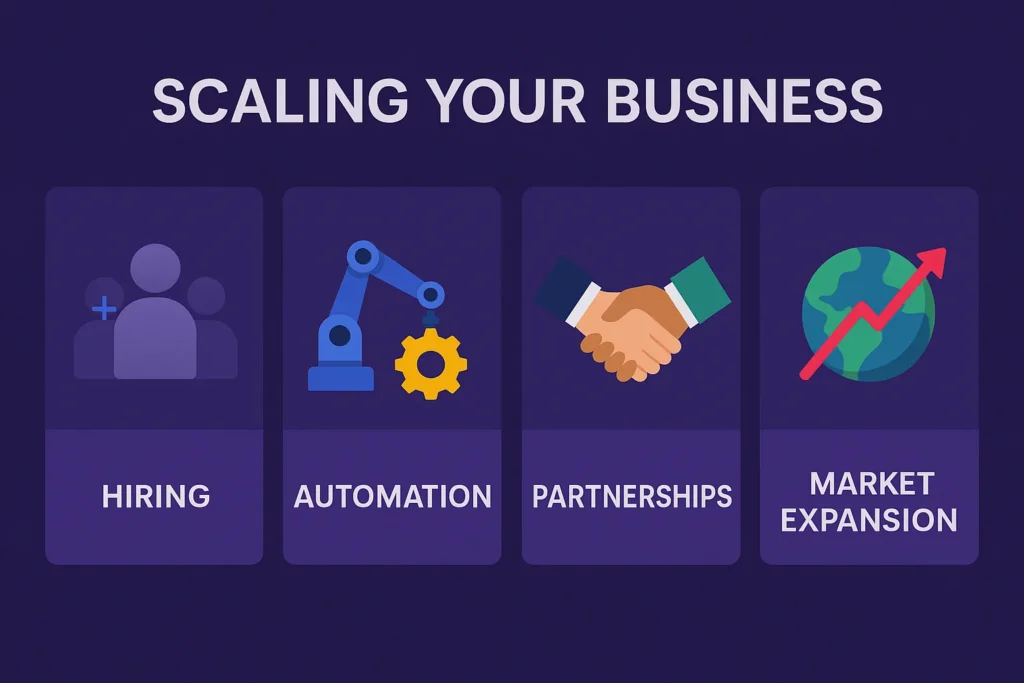
Knowing how to start a cyber security company is just the beginning; scaling it is another game entirely. It’s not about adding more seats, it’s about increasing output without diluting impact or exposing your infrastructure.
Growth brings new revenue, but also new risks: vendor sprawl, process bloat, and cultural decay. Here’s how to scale with the same discipline you use in securing systems.
1. Audit Your Readiness to Scale
Before you even think about hiring or expanding services, ask yourself:
- Can your team handle more clients without working 60+ hour weeks?
- Are your service processes documented, repeatable, and automatable?
- Are your average deal sizes growing, or are you chasing more clients for less revenue?
If not, pause and fix that first. Scaling a broken system just accelerates failure.
2. Operationalize What You’ve Already Proven
Start with what’s already working. Double down on your core service that:
- Generates the most profit,
- Solves the clearest client pain,
- Requires the least custom effort per client.
Document and templatize:
- Engagement workflows (scoping → testing → reporting → post-mortem)
- Client communication templates (pre-engagement, progress check-ins, wrap-up)
- Technical operations (tooling setup scripts, pentest report templates, server hardening guides)
Tools to support this:
- GitLab or Forgejo for repo/workflow control
- Ansible or Terraform for infra deployment
- CryptPad or Markdown + Pandoc for secure, reproducible reporting
3. Hiring for Scale: From Operators to Enablers
Hiring the wrong people kills companies. Hire technically sound, mission-aligned people who increase your capability, not just capacity.
Phase 1: Deliverability
- Hire specialists to offload delivery (pen testers, OSINT analysts, cloud auditors)
- Roles: Pentester, Threat Analyst, SecOps Engineer
- Qualities: Hands-on tool experience, open-source contributions, strong OpSec
Phase 2: Scalability
- Hire people who make others more productive (build infrastructure, automate workflows)
- Roles: DevSecOps, Automation Engineer, Process Architect
- Tools: Python, Bash, Jenkins, GitOps, REST APIs
Phase 3: Client Confidence
- Bring in advisory staff to retain high-value accounts
- Roles: vCISO, GRC consultant, Strategic Threat Advisor
- Focus: Relationship management, strategic guidance, high-trust upselling
Avoid: “Security Managers” with no hands-on experience, career grifters, anyone who can’t explain why TLS still fails sometimes.
Read More On: Is Cybersecurity a Good Career in 2025?
4. Expand Your Service Offering Carefully
Don’t chase hype or client demands without a strategic fit. Every new service adds complexity.
Framework for Expansion:
- Assess demand: Are clients repeatedly asking for this?
- Validate internally: Can we deliver this with existing staff/tools?
- Package it clearly: Turn it into a productized offer with fixed outcomes.
Smart expansion paths:
- Pentesting → AppSec as a Service
- Infra reviews → Cloud security hardening + alerting
- One-off assessments → Quarterly audits + breach readiness testing
- Retainers → Virtual CISO services
Avoid: Spinning up SOCs or IR teams before your processes are airtight. High stakes, high burnout, high failure rate.
Read More On: The Role of ZTNA and VPN in Modern Cybersecurity Strategies
5. Revenue Scaling Without Burnout
Not all growth comes from more clients. Optimize revenue per client and revenue per hour worked.
Tactics:
- Upsell quarterly testing or monthly monitoring
- Offer training packages (custom security workshops)
- Create gated content or tools (paywall, subscription, white-labeled versions)
SEO Tip: Build landing pages for each new service with long-tail queries like “virtual CISO for SaaS,” “monthly penetration testing service,” and “cloud security hardening consultants.”
Read More On : 10 Online Best Dark Web Search Engines for Tor Browser
6. Automate and Systematize Everything
The biggest bottleneck in scaling a cybersec firm? Manual work that shouldn’t be manual.
Critical automations:
- Recon, scanning, asset mapping (cron + API + alert)
- Infrastructure deployment and teardown (IaC + CI/CD)
- Report generation (Markdown to PDF with Pandoc)
- Client onboarding (secure forms + automated scope confirmation)
Infrastructure stack:
- Jenkins + GitLab CI for pipelines
- Vault + Yubikeys for secrets and access control
- Gitea + Forgejo for code management
- Wazuh + Zeek + Suricata for defensive clients
7. Culture at Scale: Maintain the Hacker Ethos
As you grow, your company risks becoming… corporate. Fight that.
Culture guardrails:
- No open plan offices. No Zoom marathons. No Jira hell.
- Bi-weekly CTFs or exploit challenge sprints.
- Share 0days or tooling with internal write-ups.
- Enforce high OpSec internally, secure comms, least privilege, and compartmentalization.
Your team should love what they do because it’s real, not because it’s comfortable.
8. Growth Capital: Bootstrap First, Burn Later
If you’re profitable, stay bootstrapped. Outside funding often means losing control, shifting culture, and compromising mission.
Funding alternatives:
- Crypto grants (Filecoin, Zcash, Monero Foundation)
- Bounties from public bug bounty programs
- Strategic retainers with large orgs (without exclusivity)
- Equity-free R&D grants (SBIR, Horizon Europe)
VCs to avoid: Anything tied to surveillance tech, adtech, or cloud monopolies.
Final Thoughts
If you’re still asking how to start a cyber security company in today’s climate, the answer isn’t found in startup cliches or certification brochures.
It’s found in building something lean, effective, uncompromising, rooted in real security, not marketing spin.
You’ve now seen the blueprint:
- Pick a focused cybersecurity niche that solves urgent problems.
- Build a tech stack that you own, not one rented from surveillance giants.
- Deliver services with precision, transparency, and operational discipline.
- Acquire clients by earning trust, not spamming feeds.
- Scale without losing control of your ethics, code, or culture.
The cybersecurity industry is noisy. But there’s always room for sharp, sovereign operators who understand the game and know how to win without selling out.
You don’t need permission to begin. You just need intent, capability, and a refusal to compromise.
So if you’re serious about how to start a cyber security company, stop planning. Start building. The demand is real. The threats are real. And the time is now.
Frequently Asked Questions
Do I need a license to run a cyber security business?
In most countries, you don’t need a specific cybersecurity license. Still, you’ll need to register your business, get a tax ID, and comply with data protection regulations (like GDPR or CCPA) if handling client data.
Can I run a cyber security company solo?
Absolutely. Many successful firms start as solo operators offering consulting, pentesting, or audits. As demand grows, you can scale your services, build a team, and evolve into a full-stack cybersecurity firm.
Who is the richest person in cybersecurity?
Jay Chaudhry, the 62-year-old founder and CEO of Zscaler, has become one of the wealthiest individuals in the cybersecurity world. His net worth surged dramatically after Zscaler’s stock value skyrocketed during the pandemic, placing him among the global elite.
What is the highest-paid job in cybersecurity?
The top-paying role in cybersecurity is Chief Information Security Officer (CISO). This executive-level position oversees an organization’s entire cybersecurity framework, including risk assessment, security strategy, and regulatory compliance.
What is the largest cybersecurity company?
Palo Alto Networks is widely recognized as one of the leading cybersecurity companies globally. Its product suite includes cutting-edge firewalls, cloud security tools, and endpoint protection, safeguarding more than 80,000 organizations worldwide across various platforms and devices.

